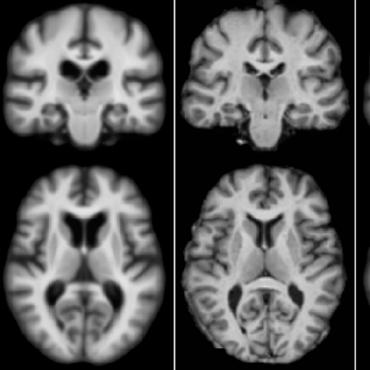Diffeomorphic Medical Image Registration
6 papers with code • 3 benchmarks • 2 datasets
Diffeomorphic mapping is the underlying technology for mapping and analyzing information measured in human anatomical coordinate systems which have been measured via Medical imaging. Diffeomorphic mapping is a broad term that actually refers to a number of different algorithms, processes, and methods. It is attached to many operations and has many applications for analysis and visualization. Diffeomorphic mapping can be used to relate various sources of information which are indexed as a function of spatial position as the key index variable. Diffeomorphisms are by their Latin root structure preserving transformations, which are in turn differentiable and therefore smooth, allowing for the calculation of metric based quantities such as arc length and surface areas. Spatial location and extents in human anatomical coordinate systems can be recorded via a variety of Medical imaging modalities, generally termed multi-modal medical imagery, providing either scalar and or vector quantities at each spatial location.
( Image credit: Quicksilver )
Libraries
Use these libraries to find Diffeomorphic Medical Image Registration models and implementationsLatest papers with no code
$\texttt{NePhi}$: Neural Deformation Fields for Approximately Diffeomorphic Medical Image Registration
In contrast to the predominant voxel-based transformation fields used in learning-based registration approaches, NePhi represents deformations functionally, leading to great flexibility within the design space of memory consumption during training and inference, inference time, registration accuracy, as well as transformation regularity.
Diffeomorphic registration with intensity transformation and missing data: Application to 3D digital pathology of Alzheimer’s disease
We overcome this challenge by developing a new registration technique that simultaneously classifies each pixel as “good data” / “missing tissue” / “artifact”, learns a contrast transformation between modalities, and computes deformation parameters.
Learning a Probabilistic Model for Diffeomorphic Registration
Besides, we visualized the learned latent space and show that the encoded deformations can be used to transport deformations and to cluster diseases with a classification accuracy of 83% after applying a linear projection.
Generative diffeomorphic modelling of large MRI data sets for probabilistic template construction
In this paper we present a hierarchical generative model of medical image data, which can capture simultaneously the variability of both signal intensity and anatomical shapes across large populations.




 PPMI
PPMI
 ACDC
ACDC